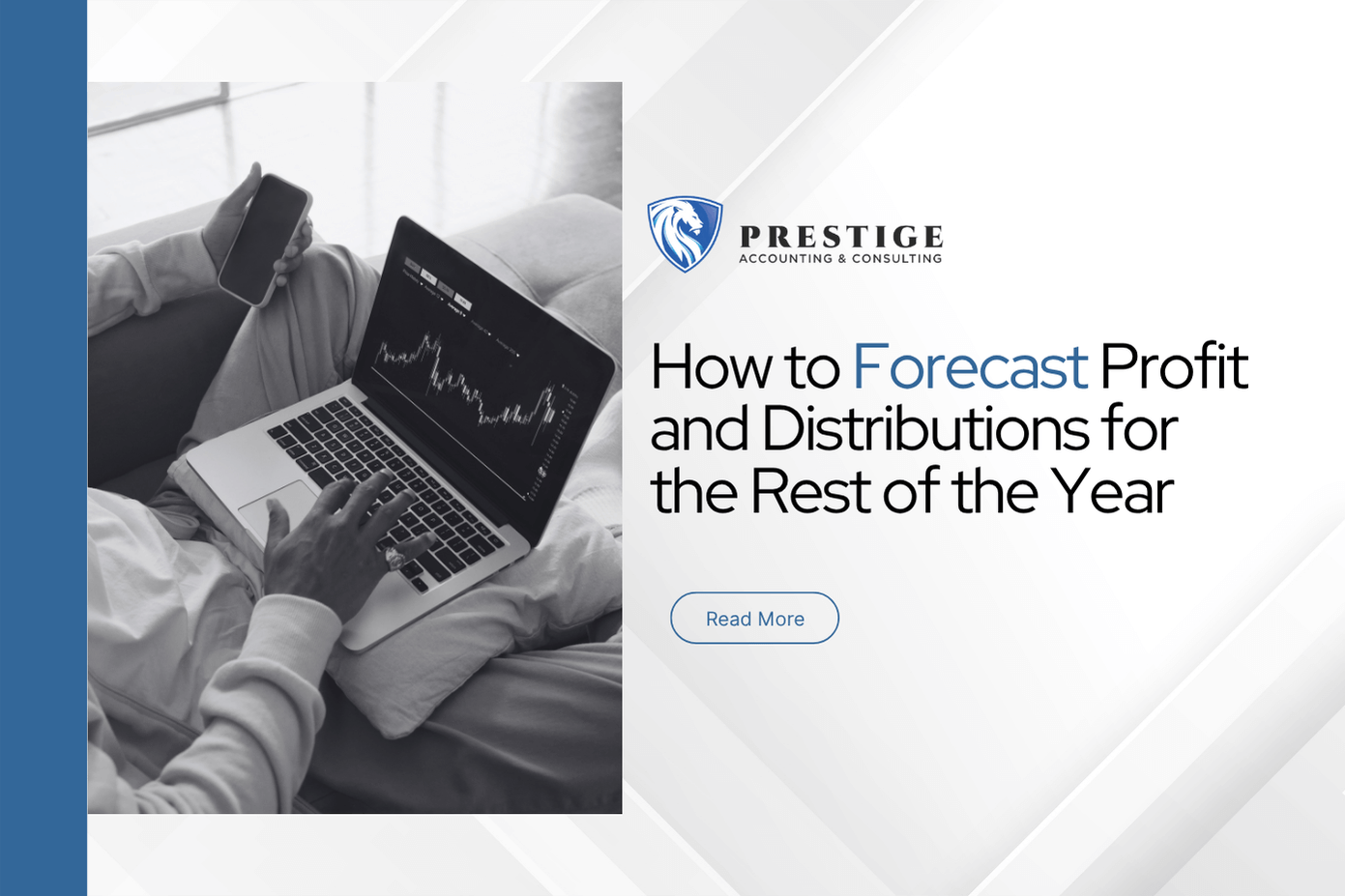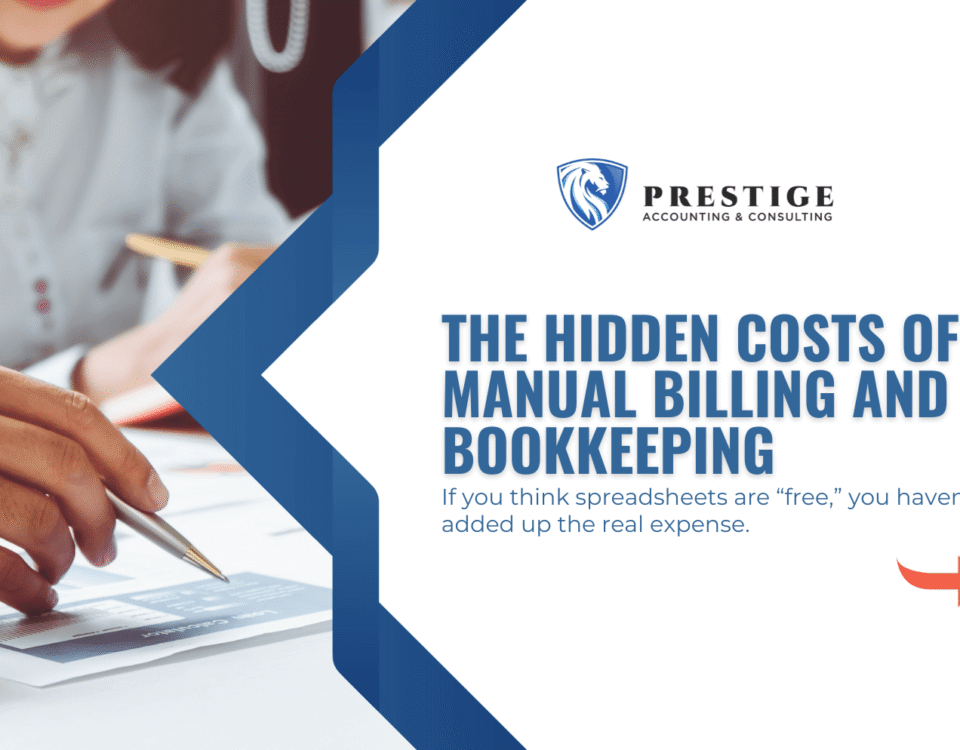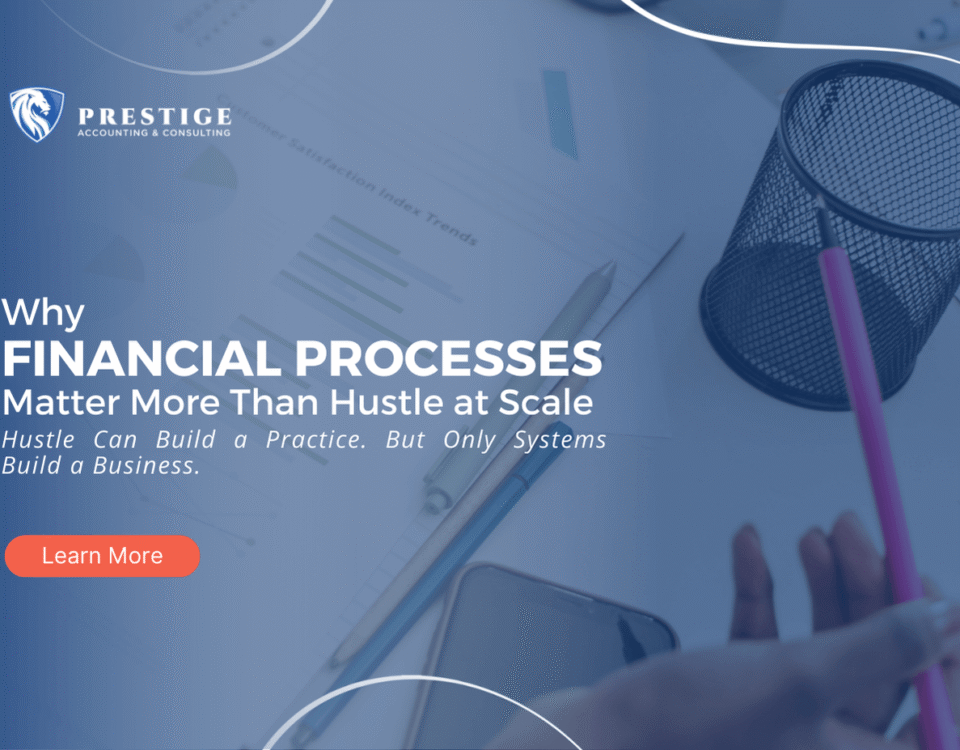
Are You Overpaying Quarterly Taxes? Here’s How to Know
July 10, 2025
Top 5 Tax Deductions Law Firms Miss Before Year-End
July 17, 2025
Categories
How to Forecast Profit and Distributions for the Rest of the Year
A CPA’s Guide to Planning Smarter Owner Draws (Not Just Guessing)
If you’re a law firm owner, chances are you’ve pulled money out of your business without really knowing how much profit is left—or how much you should take.
That moment of “Can I afford this draw?” shouldn’t come from checking your bank account. It should come from a clear forecast: a look into what your firm is likely to earn, spend, and retain over the next six months.
Forecasting is how smart firm owners plan profitably, avoid tax surprises, and make confident financial decisions.
Here’s how to do it—with simplicity, strategy, and the right questions.
First, Understand the Difference: Cash vs. Profit vs. Distributions
Before we jump into forecasting, you need to understand three terms most attorneys mix up:
- Profit is what’s left after you subtract expenses from revenue.
- Cash flow is about timing—when money comes in and when it goes out.
- Distributions (or owner draws) are the money you take out of the business for yourself.
You can be profitable and still have poor cash flow. You can have a big bank balance and no real profit. The key is projecting both numbers ahead so your distributions are tax-smart, sustainable, and compliant.
How to Build a Basic Forecast for the Rest of the Year
Start by looking at your year-to-date numbers. Most accounting software (like QuickBooks or Xero) can give you a profit and loss (P&L) statement from January 1 to today.
Let’s say:
- You’ve earned $300,000 in revenue
- You’ve spent $180,000 on expenses
- You’re left with $120,000 in net profit
Now, assuming your pace continues, you can reasonably expect similar numbers in Q3 and Q4. That means:
- Projected annual revenue: ~$600,000
- Projected annual expenses: ~$360,000
- Projected annual profit: ~$240,000
Now you know your estimated year-end profit.
But that doesn’t mean you should immediately draw all $240,000.
How Much Can You Actually Draw?
Profit doesn’t mean it’s all available to withdraw. Here’s what needs to be accounted for first:
- Taxes – You’ll owe income tax on that profit. Depending on your entity and state, plan for 25%–35% in tax liability.
- Cash Reserves – Set aside cash for slow months, emergencies, and upcoming investments (marketing, hires, tech upgrades).
- Operating Needs – You may have upcoming expenses like bar dues, bonuses, or software renewals that will reduce available cash.
Let’s say you want to keep:
- $60,000 for taxes
- $30,000 in reserves
- That leaves ~$150,000 potentially available for owner distributions—spread across the year.
You can now map that out in monthly or quarterly owner draws, based on real numbers—not emotion.
Why S-Corp Owners Need to Be Extra Careful
If your law firm is taxed as an S Corporation, you’re legally required to pay yourself a reasonable salary before taking distributions.
That salary:
- Must be reported via payroll
- Has payroll taxes withheld
- Impacts your tax planning and retirement contributions
Then, and only then, can you take profit distributions—assuming your forecast supports it.
A common mistake we see: firm owners who draw distributions before their W-2 salary is even set. That’s a red flag for the IRS, and it can cost you penalties later.
What If Revenue Is Unpredictable?
Forecasting doesn’t have to be perfect—it just needs to be intentional.
If your revenue is inconsistent:
- Use conservative averages
- Base forecasts on the lowest-earning quarter
- Build in buffer room for unexpected expenses
You’re better off underestimating revenue and being pleasantly surprised than projecting growth you can’t meet.
If your firm handles contingency cases, try assigning expected case values over future quarters and use weighted averages to model potential outcomes.
Real CPA Advice: Make Forecasting a Monthly Habit
Once your forecast is built, revisit it monthly. Update your actual revenue and expenses. Adjust expectations as needed.
This is how you:
- Know when to draw more—or less
- Prepare for taxes with no guesswork
- Plan hiring, bonuses, or marketing spend with data behind it
This process is exactly what CFOs do for larger firms. It works just as well for small and solo firms—if you have the right systems and support.
Want Help With Forecasting and Owner Pay?
Most lawyers don’t need a finance degree—they need a CPA who understands law firm models, cash flow cycles, and IRS rules.
At Prestige Accounting and Consulting, we help attorneys:
- Forecast profit and cash flow
- Set owner draws aligned with taxes
- Structure compensation for S-Corp compliance
We’ll help you build a plan you can trust—and pay yourself like the CEO you are.





